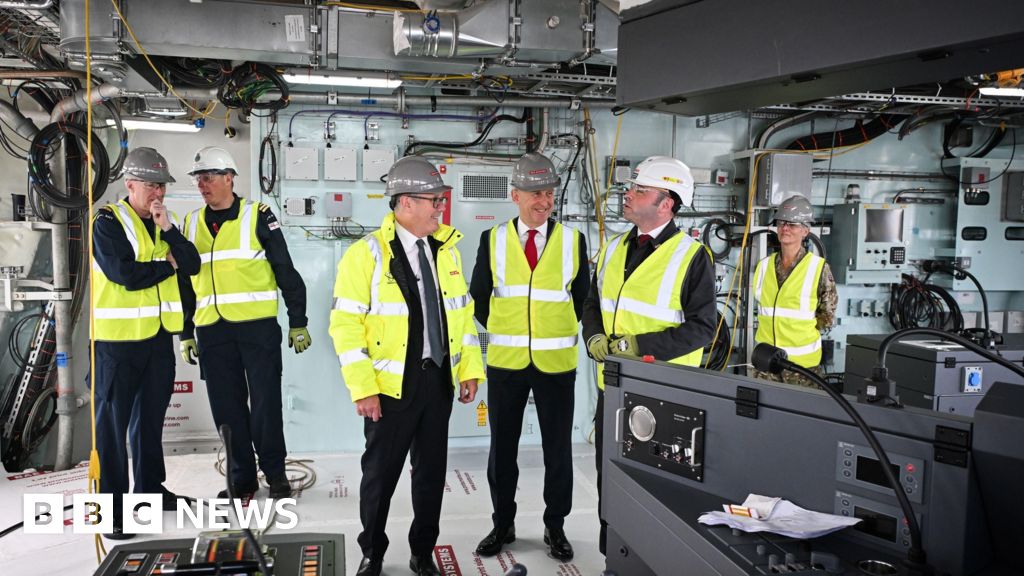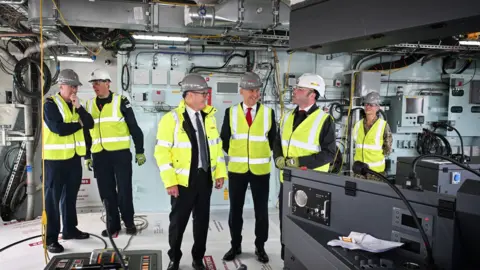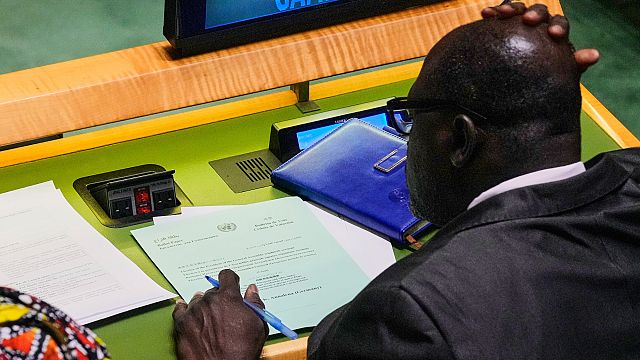At a glance: Key points from government's defence strategy

At a glance: Key points from government's defence strategy
Oscar BentleyPolitical reporter
 PA Media
PA MediaPrime Minister Sir Keir Starmer has set out the government's defence strategy for the next decade.
The so-called "root and branch" review of the UK's defence capability, led by former UK defence secretary and Nato secretary general Lord Robertson, looked at everything from equipment to personnel to future threats.
The government says they will implement all of the review's 62 recommendations.
Here is a summary of the government's response to the review.
Strategic goals
- A Nato-first defence policy, with the UK's "biggest contribution" to the military alliance since it was founded in 1949
- Move to "war-fighting readiness" as the armed forces' central purpose
- A "defence dividend", with defence investment used to drive growth, creating jobs and driving investment across the country
Army, Navy and Air Force
- Create a hybrid Royal Navy that uses aircraft, drones, warships, submarines to patrol the north Atlantic "and beyond"
- A "10-times more lethal" army, combining air defence, artificial intelligence, long-range weapons and land drone swarms
- A "next generation" RAF with new F-35 jets, Typhoon jets and autonomous aircraft
- New defence exports office in the Ministry of Defence, exporting to UK allies
- Save £6bn by 2029 with efficiency savings and changes to the civilian defence workforce
Nuclear plans
- Build 12 new attack submarines as part of the Aukus programme in partnership with Australia and the United States, with a new submarine delivered every 18 months
- £15bn investment in the sovereign warhead programme, as part of the renewal of the old Trident nuclear deterrent
- Programme would create 9,000 jobs and "thousands more" further down supply chains
Personnel and reserves
- Small increase to the size of the regular army to 76,000 full-time soldiers after 2029 - although this has yet to be funded
- A fully-trained strategic reserve, ready to mobilise at any time
- Over £1.5bn extra funding until 2029 to improve accommodation for the UK armed forces
- Increase number of Armed Forces cadets by 30% and introduce a voluntary cadets gap year for school and college leavers
Cyber
- Battlefield decisions about targets to be taken quicker with £1bn investment which will better join up weapons systems
- Establish a new Cyber and Electromagnetic Command to lead defensive and offensive cyber capabilities, as well as electromagnetic warfare - such as the ability to jam signals to drones or missiles
Weaponry, equipment and innovation
- £11bn annual budget for front-line kit
- Building at least six new munitions and energetics factories, backed by a £1.5bn government investment and creating over 1,000 jobs
- Building up to 7,000 long-range weapons, supporting around 800 jobs
- Invest in "world leading" drone capabilities and battlefield tech
- £400m investment in a UK defence innovation organisation
- £1bn new funding for a UK air and missile defence
- UK's aircraft carriers to become first "hybrid air wings" of a European country, housing drones, jets and long-range weapons.
What's Your Reaction?
 Like
0
Like
0
 Dislike
0
Dislike
0
 Love
0
Love
0
 Funny
0
Funny
0
 Angry
0
Angry
0
 Sad
0
Sad
0
 Wow
0
Wow
0






































